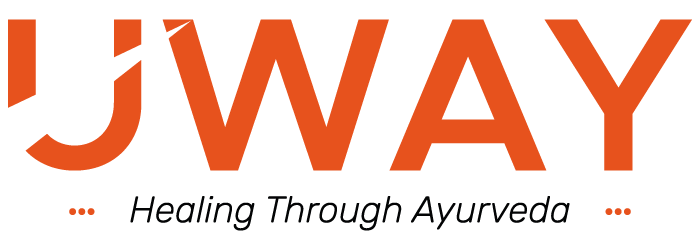Article by:
Dr Keshavan Nambisan
Chief Medical Officer UWAY Health

Over my twenty years of tending to patients worldwide, a recurring question arises: How does Ayurveda manage to circumvent surgical interventions for cervical spondylosis, even when multiple physicians have recommended surgery? Surprisingly, many patients have sought third and fourth opinions on the matter.
When is surgery recommended for cervical spondylosis?
As you know, Cervical spondylosis is a degenerative condition of the cervical spine (neck) that involves the wear and tear of the discs and vertebrae. Surgery for cervical spondylosis may be considered if conservative treatments like physio therapy, medication, and lifestyle changes do not alleviate severe symptoms.
What are major conditions when doctors recommend surgery for cervical spondylosis ?
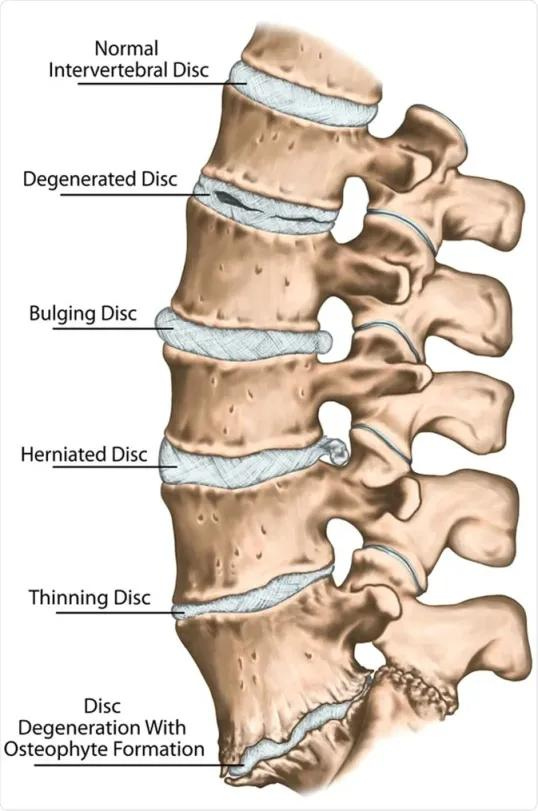
- 1. Disc Prolapse (Herniated Disc): Surgery for a herniated or prolapsed cervical disc may be recommended if conservative treatments such as rest, physical therapy, and medication fail to relieve pain and if the condition is causing severe neurological symptoms such as weakness, numbness, or tingling in the arms or hands. Surgical procedures like a discectomy or microdiscectomy may be performed to remove the portion of the disc that is pressing on a nerve.
- 2. Disc Protrusion: A disc protrusion is a less severe form of disc herniation. Surgery for disc protrusion is usually considered when conservative treatments are ineffective, and the patient experiences persistent and debilitating symptoms that impact their quality of life or function. The specific surgical approach may depend on the location and size of the protrusion.
- 3. Canal Stenosis (Spinal Stenosis): Spinal stenosis refers to the narrowing of the spinal canal, which can put pressure on the spinal cord or nerve roots. Surgical intervention for cervical spinal stenosis may be considered when conservative treatments do not provide relief from symptoms, and the condition is causing significant neurological deficits, such as weakness or problems with walking. Surgical procedures may involve decompressing the spinal canal and possibly stabilizing the affected segments.
Why is Surgery prescribed for Cervical spondylosis?
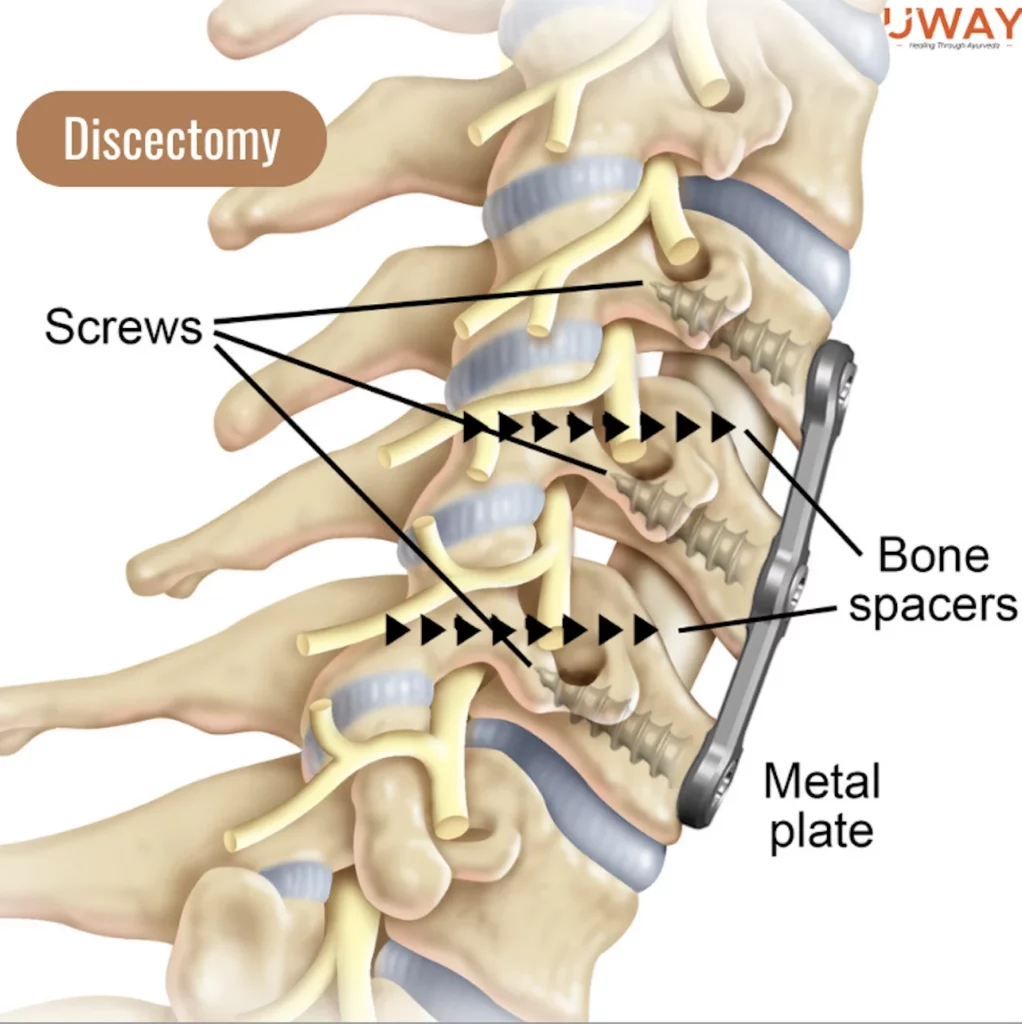
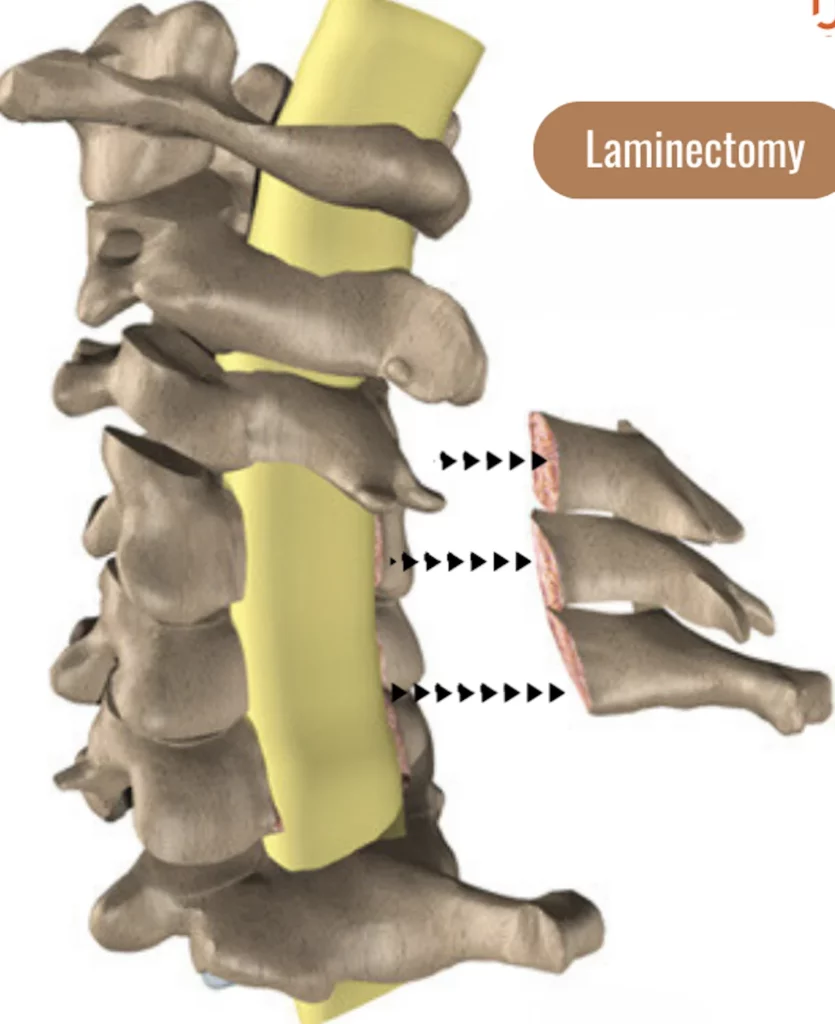
The main goal is to alleviate nerve pressure by expanding the space within the spinal canal, thus reducing pain and inflammation. Most common surgeries for cervical issues include Discectomy, Laminectomy etc Typically, your doctors will offer an estimated recovery timeline, which can range from 15 to 30 days on a case-by-case basis. Following this period, they may recommend gentle exercises to regain strength. However, the duration required for full activity readiness can vary.
Factors impact recovery duration for cervical surgeries:
- Age: Younger patients generally recover faster, but rest is essential for all ages.
- Health: Healthy, active individuals recover faster than those with health issues or who smoke.
- Adherence: Following your doctor’s guidance and avoiding strenuous activities aids smoother recovery. Jobs involving labor-intensive tasks may extend the healing process.
Ayurvedic Treatment for Cervical Spondylosis
Ayurvedic treatments for cervical spondylosis are a fascinating alternative to surgical intervention, aiming to achieve similar results through natural means. This comprehensive approach harnesses the body’s innate capabilities to:
- Reduce inflammation
- Alleviate disc bulging and shift it backward
- Create additional space within the spinal canal
- Relieve pressure on the affected nerves
Once the patient experiences symptomatic relief, a maintenance plan is instituted, combining medication with dietary and lifestyle adjustments to enhance overall quality of life.
Effective Protocol for Kerala Ayurvedic Treatment of Cervical Spondylosis
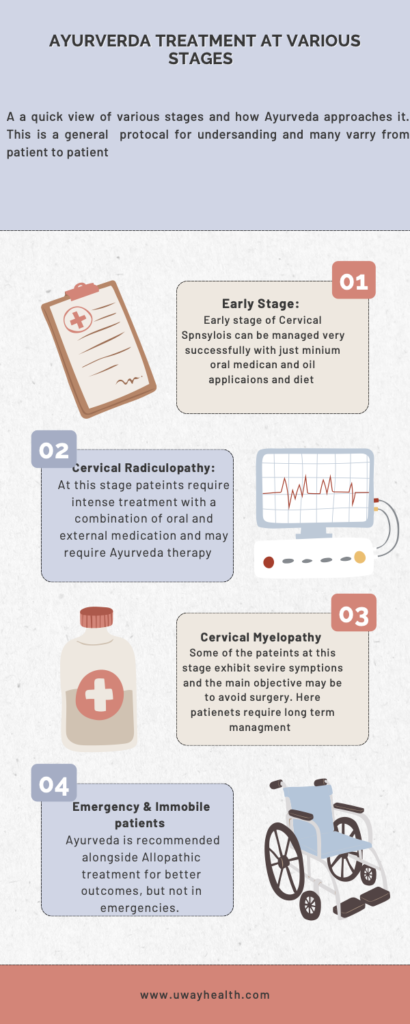
When considering Ayurvedic treatment for cervical spondylosis, it’s essential to recognize that Ayurveda, like all medical disciplines, has its own set of limitations. Unlike allopathy, Ayurveda’s treatment approach is primarily based on the Tridosha principles, making it challenging to provide a generalized estimate of recovery percentages.
At UWAY Health, our dedicated team of doctors meticulously reviews the patient’s existing medical records, including MRI and X-ray reports, and carefully assesses various lifestyle and hereditary factors. This in-depth evaluation is critical in determining whether Ayurveda is the most suitable approach for your specific case.
While Ayurveda offers a holistic and natural approach to managing cervical spondylosis, we must consider factors such as modern lifestyle and dietary habits. It is advisable, however, to exercise caution and potentially explore alternative treatments if you are over 80 years old or facing an emergency medical situation. For patients, particularly those who are bedridden, an exclusive Ayurvedic treatment may not be recommended. Instead, an integrated approach combining Allopathy and Ayurveda may offer more effective solutions for their needs


